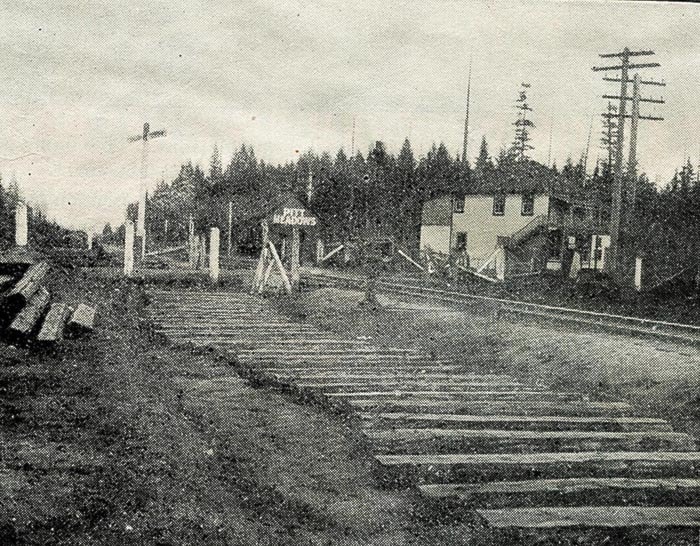There is a lot of talk these days about the possibility of an underpass at the Harris Road CP Rail crossing.
At the Pitt Meadows Museum, we are acutely aware of what this could mean for both the approximately 18,000 vehicles that travel Harris Road each day, as well as for the heritage buildings that make up the museum site.
When the Old General Store, the museum’s main site and also the home of the community archives, first opened on Harris Road in 1908, the CPR’s line through Pitt Meadows was only 23 years old and was not yet double-tracked.
Two trains (the Fraser Valley Local) passed each day, one going west in the a.m. and the other going east in the p.m.
This was hardly a handicap for the few travellers who used Harris Road, then a narrow dirt track.
By the time the former owners of the museum’s second site, the Hoffmann and Son shop, arrived in the area (in 1934) Harris Road had expanded to a two lane graded road and the CPR was only running a few more trains each day, again not inconveniencing users of Harris Road too much.
Fast forward to the last few decades and times have truly changed with more than 18,000 vehicle trips each day on Harris and approximately 22 trains crossing the road in a twelve hour period between 7:00 a.m. and 7:00 p.m. Further, it can take up to 12 minutes for a single train to clear the road and longer if another train arrives on the second set of tracks.
At the museum, we know all too well the frustration of drivers sitting in line waiting to get underway. So much so that sometimes we think we can actually see the steam rising from the vehicles.
Inside the building we seldom even notice when a train is passing, save for the gentle rocking of office furniture and, unfortunately, historical objects and archives racking. But occasionally the engines are loud enough to cause staff and volunteers to stop talking until they pass and we can hear again.
That said, should an underpass (or an overpass) become a reality necessitating the “… relocation of heritage buildings just a little further back … ”
What will that mean for this small community facility? A small move from a location point of view does not always translate into a small task for the limited number of individuals involved in operating the facility. In 1998, when the museum moved from its former location on Davison Road to the General Store site, it took the part-time staff member, a small band of volunteers and a community business who offered some support when needed more than six months of inventorying, packing and moving.
An additional six months of unpacking and setting up at the new site was also required.
During that time, we managed to stay open to the public for most of the months and held our annual summer Heritage Thursdays for Children sessions without missing a beat.
Since then the museum’s object and archives collections have almost doubled and the Hoffmann and Son site, with its own large collection, has also come on line.
As we discuss the possibility of a ‘little relocation’ here at the museum, the task would seem almost overwhelming. But we also make reference to the fact, should a move become a reality, it won’t be the first relocation for the 130-year-old building, as it was originally moved to this site in 1908 in order to take advantage of the fact the CPR was so close by.
It would seem the more things change, the more they stay the same.
– Leslie Norman is curator at Pitt Meadows Museum and Archives.
